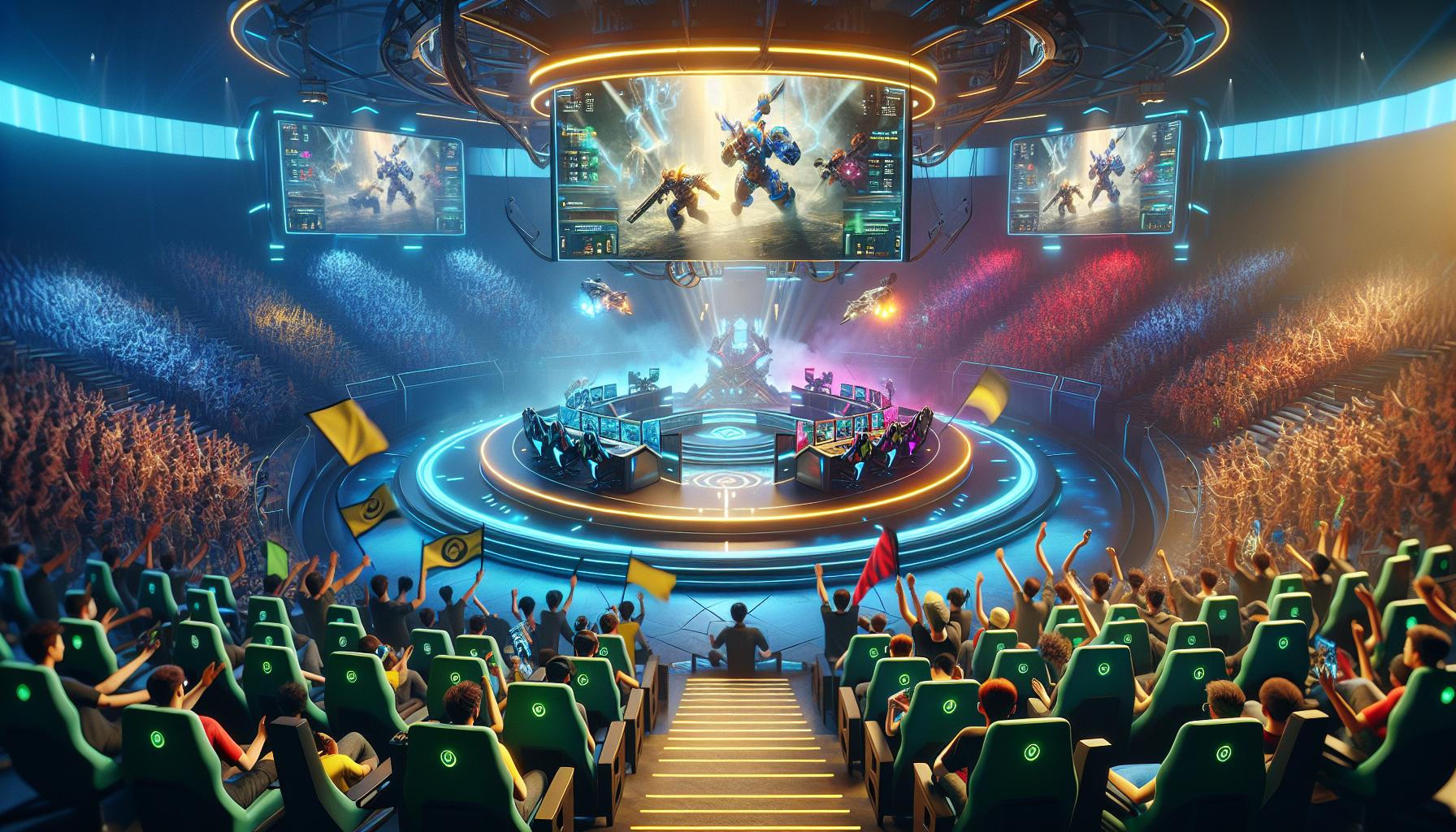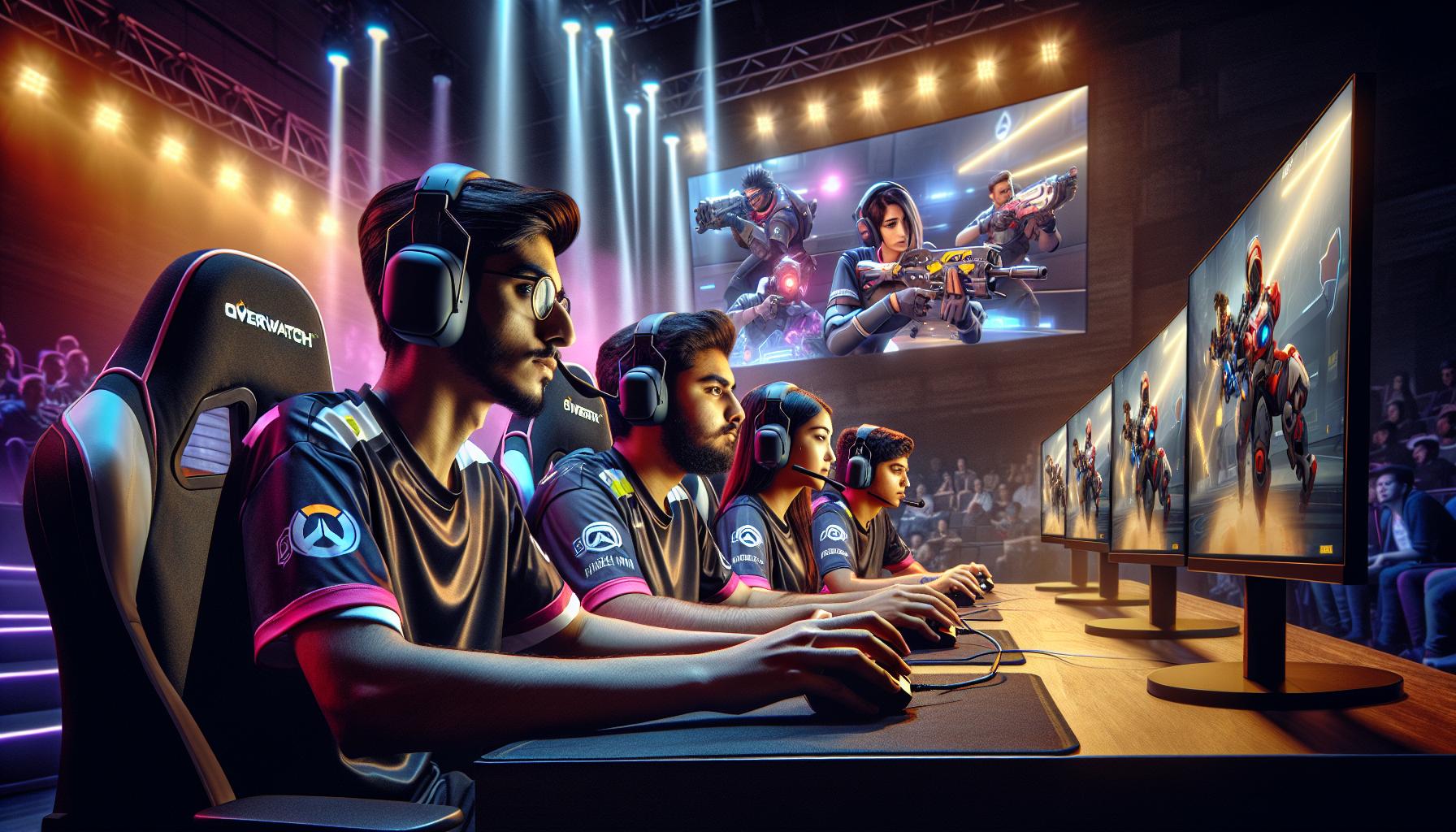 Key Takeaways
Key Takeaways
- Rapid Growth: Overwatch esports quickly gained traction after the game’s 2016 release, transitioning from grassroots tournaments to a structured competitive scene.
- Overwatch League Launch: The Overwatch League (OWL) introduced a city-based franchise model in 2017, significantly enhancing the league’s visibility and investment opportunities.
- Key Players and Teams: Notable players and teams emerged, creating rivalries and enhancing fan engagement within the esports ecosystem.
- Major Tournaments Impact: Significant tournaments, including the OWL and Overwatch World Cup, showcased talent and helped build vibrant communities around the game.
- Evolving Strategies: Continuous changes in gameplay and meta require teams to adapt strategies, reflecting shifts in character balance and team compositions.
- Community Engagement: A strong community and fan engagement drive Overwatch esports’ success, with millions of fans actively participating through streaming platforms and social interactions.
Overwatch has transformed the gaming landscape since its launch in 2016, captivating players and fans alike with its vibrant characters and fast-paced gameplay. As a team-based first-person shooter, it quickly carved out a niche in the esports arena, paving the way for thrilling competitions and a dedicated following.
From grassroots tournaments to the establishment of the Overwatch League, the game’s competitive scene has evolved dramatically. This journey not only showcases the passion of players and fans but also highlights the industry’s growth and the challenges faced along the way. Exploring the history of Overwatch esports reveals a rich tapestry of moments that have defined the genre and solidified its place in the world of competitive gaming.
Overwatch Esports History
Overwatch esports began gaining traction shortly after the game’s release in 2016. Initially, grassroots tournaments organized by communities featured local players competing for recognition. As interest grew, third-party organizers like ESL and DreamHack hosted larger events, contributing to a burgeoning competitive scene.
In 2017, Blizzard announced the Overwatch League (OWL), a significant milestone that introduced a structured, city-based franchise model. This model mirrored established leagues in other esports, such as League of Legends and Call of Duty. The inaugural season launched in 2018, featuring 12 teams across multiple cities. OWL quickly gained popularity, attracting substantial viewership and investments.
Market growth surged during OWL’s first season, with an estimated $3 million in prize money and sponsorships. Teams like the London Spitfire and New York Excelsior showcased high-level play, enhancing the game’s visibility. By 2019, the league expanded to 20 teams, reflecting interest from new markets.
Overwatch esports has faced hurdles, including roster changes and controversies within the league. Despite challenges, Blizzard’s commitment to esports remains unwavering, continuously improving formats and fan engagement initiatives. Events like the Overwatch World Cup also highlight international competition and player collaboration. The ongoing evolution of Overwatch esports signifies its place in the competitive gaming landscape.
The Birth of Overwatch Esports

Overwatch esports emerged quickly after the game’s 2016 release, driven by its community and competitive spirit. The transition from casual play to structured esports unfolded through key milestones.
Launch of Overwatch League
The launch of the Overwatch League (OWL) in 2017 represented a pivotal moment in Overwatch esports. The OWL introduced a city-based franchise system, similar to traditional sports leagues. The inaugural season commenced in January 2018, featuring 12 teams that competed for a prize pool exceeding $3.5 million. Viewership surged, with the first match drawing around 10 million unique viewers. This format brought significant investments from stakeholders, firmly establishing committed franchises within the esports ecosystem.
Key Players and Teams Emergence
The emergence of key players and teams significantly shaped Overwatch esports. Notable players like JJonak, the New York Excelsior’s star Zenyatta player, gained recognition for their exceptional skills and gameplay. Teams such as the London Spitfire and the Philadelphia Fusion demonstrated strong performances, contributing to the league’s excitement. Player rivalries intensified as these teams competed for dominance, leading to a richer narrative and enhanced fan engagement. The combination of individual talent and team dynamics fostered a competitive environment that attracted both players and spectators alike.
Major Tournaments and Championships

Overwatch esports boasts a rich history marked by significant tournaments that shaped competitive play. These events provided platforms for players to showcase their skills and fostered vibrant communities around the game.
Early Tournaments
Early Overwatch tournaments consisted primarily of community-organized events. Local players participated in numerous grassroots competitions, aiming for recognition and achievement. Events like the Overwatch Open and the Apex League gained traction, attracting attention from both players and spectators. In these competitions, various teams vied for pride rather than substantial prizes, setting a foundation for more organized play.
The competitive landscape of Overwatch grew rapidly, marked by the establishment of larger tournaments. Major organizers like ESL and DreamHack began hosting significant events, drawing international talent. The Overwatch League (OWL) debuted in 2018, featuring a franchise model that bolstered team investments and viewership. The OWL’s inaugural season became a pivotal moment, with 12 teams competing for a massive prize pool of over $3.5 million. Following the OWL’s success, international competitions like the Overwatch World Cup emerged, highlighting global talent and enhancing community engagement. By 2019, the league expanded to 20 teams, signaling sustained interest and investment in Overwatch esports.
Changes in Meta and Gameplay

Overwatch esports underwent notable shifts in meta and gameplay, influencing how teams strategize and players perform in matches. These changes directly impacted the competitive scene, requiring continuous adaptation.
Evolving Strategies
Evolving strategies in Overwatch reflect shifts in character balance and player preference. Teams prioritize synergy, often favoring compositions that maximize teamwork. For instance, the “Dive” composition, popularized in early seasons, utilized mobile heroes like Genji and Winston to engage quickly. As the game advanced, “GOATS” emerged, focusing on a triple tank and support configuration that emphasized durability and sustainability. Variations like “Bunker” compositions also gained traction, utilizing heroes like Orisa and Sigma to create fortified positions. Players analyze past match data to refine strategies, adapting to opponents’ patterns and leveraging counterpicks effectively.
Role of Patch Updates
Patch updates significantly shape the gameplay dynamics and competitive landscape. Blizzard regularly releases patches that adjust hero abilities, balance gameplay, and introduce new content. Frequent patches can create volatility in the meta, forcing teams to reassess their strategies rapidly. For example, the release of hero changes in Patch 1.44 impacted popular heroes dramatically, prompting a shift towards DPS characters like McCree and Ashe. Competitive teams must stay informed about patch notes and immediately integrate changes into their training, ensuring optimal performance in high-stakes matches. Effective adaptation to these updates often dictates team success in tournaments.
Community and Fan Engagement
Overwatch esports thrives on strong community and fan engagement, bolstered by various initiatives that connect players and supporters. The vibrant interaction between the game and its audience plays a significant role in its success.
Growth of the Viewing Audience
The viewing audience for Overwatch esports expanded rapidly since the game’s release. In its inaugural Overwatch League season, viewership reached approximately 10 million unique viewers for the first match. By 2019, the total audience increased significantly due to consistent high-stakes competitions and engaging live-streaming formats. Major platforms like Twitch and YouTube played crucial roles in this growth, allowing fans to watch professional matches, interact with streamers, and participate in community discussions. Additionally, events like the Overwatch World Cup attracted global attention, pulling in millions of viewers and further solidifying the game’s presence in the esports realm.
Influence on Gaming Culture
Overwatch’s influence on gaming culture is profound, shaping trends and fostering a sense of community among players and fans. The game’s diverse character roster and narrative depth encourage strong fan engagement through fan art, cosplay, and community events. Memorable moments from tournaments often lead to shared highlights on social media, amplifying the game’s cultural impact. Overwatch’s unique blend of accessibility and competitive intensity has inspired various online forums, podcasts, and fan-created content, enhancing community interaction and support. The game’s success in esports has reinforced the importance of teamwork and strategy in competitive gaming, steering the conversation toward cooperation over individual prowess.
The Growth of Competitive Play
Overwatch esports has carved out a unique niche in the competitive gaming world. Its journey from grassroots tournaments to a structured league has showcased the dedication of players and the passion of fans. The evolution of gameplay strategies and the emergence of iconic teams and players have enriched the scene, making it dynamic and engaging.
Despite facing challenges, Overwatch continues to adapt and thrive, reflecting the resilience of its community. With growing viewership and innovative initiatives, the future of Overwatch esports looks promising. The game’s ability to foster connections between players and fans ensures its lasting impact on the esports landscape.